Tech is for type 2s, too: How I approach diabetes tech for people with T2D
By Amy Hess-Fischl, MS, RDN, LDN, BC-ADM, CDCES
6 min read

Quick: Think of a diabetes patient who, if they walked in your door right now and asked to get a continuous glucose monitor (CGM), you would have no hesitation in prescribing them one.
That patient has type 1, right?
I get it. Whenever a new piece of diabetes tech comes out, it’s understandable to think of appropriate people with type 1 diabetes and how they might benefit. And that’s fine, as long as we don’t forget our type 2s. In my experience, people with type 2 diabetes, even those who have been recently diagnosed, can sometimes benefit in the same ways from using diabetes tech.
CGMs can reveal insights to people newly diagnosed with T2D
The ADA recommends CGMs for people with T2D who take insulin, and I certainly agree with that. I’ve also had patients not taking insulin who started using a CGM, and it helped them better understand their glucose patterns. In my opinion, if they can afford it or their insurance will cover it, it’s worth considering any person with T2D for a tool as useful as a CGM.
More often than not, when I meet adults who’ve just found out they have T2D, they are frantically trying to cram diabetes management into an already structured life. Many of the newly diagnosed people I see don’t yet understand how their food consumption and physical activity habits affect their glucose, and they feel overwhelmed being asked to make so many changes so fast. They’re building their self-management plane while it’s already in the air.
I’m glad to say that at this point, many of my patients with T1D use CGMs. But they are also often the first piece of tech I recommend for appropriate people with type 2 diabetes. From a practical point of view, it helps that a lot of my patients with T2D feel that using a CGM fits well enough within their busy lives. And in the bigger picture, the data captured by a CGM can be a great educational tool.1,2
After 2 weeks, we can review their ambulatory glucose profile (AGP) report together. We can analyze the glucose graphs and see the ups and downs they’ve been too busy to notice in the moment. It’s like watching a slow-motion replay of what happened to their glucose every time they ate, slept, and exercised—a starting place to help them think about cause and effect, and where change may be needed.3
Once they get comfortable with the CGM, my next suggestion is usually, “Now that you can see your glucose, how would you feel about using an app to log your food so we can look at meals and glucose together?” If they don’t feel they can handle that, I’ll respect their judgment and wait—baby steps. For people with a new diagnosis, we’re just getting started, so there’s time to foster this partnership while they learn to take more ownership of their care.

It’s like watching a slow-motion replay of what happened to their glucose every time they ate, slept, and exercised—a starting place to help them think about cause and effect, and where change may be needed.
Tech can help people with T2D uncover opportunities for better self-management4
It’s not uncommon for some of my patients with type 2 diabetes to take a long time to come around to adopting diabetes tech. Still, I don’t give up, and it often pays off. I can point to an 81-year-old woman with T2D who I’ve been seeing every 3 months for the better part of 2 decades. She’s one of my favorite people, but for 13 years she refused to use a CGM, saying she was content to manually check her glucose, sometimes 8 times a day or more.
Eventually, her rising A1C made her reconsider. I had to level with her that while I respected her decision to stay with a blood glucose meter, her frequent hypoglycemia and rising A1C were putting her at a higher risk of serious acute and long-term complications. We needed to look at more detailed data to see where the problem spots were. Finally, she agreed to a 2-week trial of a CGM.
Two weeks later, the first words she said to me were, “I love this thing!” Now she doesn’t know how she went so long without it. I’m happy to report she frequently looks at her CGM data between visits. No more having to wait months and wonder if her A1C is creeping up—the data has empowered her to make actionable changes to reduce her hypoglycemia.

In my experience, tech like CGMs can give people with T2D a new perspective on their diabetes management and open up avenues for them to be more engaged in their care.
Tech can sometimes do more than a person with T2D expects
Sometimes my patients and I discover that tech can address needs they hadn’t even thought of. I helped a truck driver with T2D who had been taking multiple daily injections (MDIs) of insulin for years, despite how inconvenient his job made it. On several occasions I asked him how he’d feel about an insulin pump, but he declined due to its visible bulk. When I mentioned that a smaller, lower-profile pump had recently gone on the market, he agreed to give it a try. Now it’s his sole method of insulin delivery, and he’s also adopted a CGM.
Besides just getting insulin delivery, he has also been pleasantly surprised with the insulin pump’s app. If his glucose is quickly rising or falling while driving, the app can send an alert so he can stay ahead of any big glucose fluctuations. The app also makes it simple for him to give himself bolus doses, without touching the pump, when he stops for meals. In fact, because he had developed insulin resistance, he had been taking fairly high doses of insulin with his MDIs. Now, if the pump’s algorithm predicts that he’s about to go low, it temporarily decreases or suspends insulin delivery. Not only does this help regulate his glucose, it helps him take less insulin than before since it helps give him exactly the dose of insulin he needs.
Technology can be a powerful tool, but sometimes I’m still surprised by the constant influx of new choices and options that are available. I get excited to learn how helpful they can be for people. That’s why I engage every patient in an ongoing conversation, checking in regularly about what they want and what’s holding them back, regardless of how long they’ve been diagnosed.
Cost concerns: Price check on aisle tech
If people with T2D are interested in diabetes tech but balk at the up-front cost, I try not to let that stop their momentum. For example, if a CGM is appropriate for them, I recommend they take advantage of a free trial period to see if it’ll be worth the expense for them.
Also, we can do a quick online check of their insurance coverage (many people who don’t take insulin may still be eligible for Medicare or commercial insurance coverage of a CGM) and look into savings offers from the manufacturer. If they’ve already started insulin and we’re considering an insulin pump or smart pen, I can help them check coverage for that too.
Even with insurance coverage, a seemingly low co-pay can still be a significant expense for some people. Fortunately, there are resources at my disposal to help them find retail deals on devices and supplies, and I encourage providers to talk with manufacturers’ representatives to see what kind of assistance they may offer. Helping people problem-solve the cost issue from the start is a key part of getting many people on board with using diabetes tech.5

If people with T2D are interested in diabetes tech but balk at the up-front cost, I try not to let that stop their momentum. For example, if a CGM is appropriate for them, I recommend they take advantage of a free trial period.
Collaborate, collaborate, collaborate
Diabetes technology requires some training for both the patient and the provider.5 For people with T2D, getting started with tech may take time. But you, as a provider, don’t have to do all the care and feeding yourself.
Certified diabetes care and education specialists (CDCES) like myself are out there, and our job is to help.6 Even if you don’t have one on staff in your practice, you can refer people to a CDCES for group classes or one-on-one sessions. Thanks to telehealth, these days you can stay in regular contact with the patient and the CDCES without any of you being in the same building or city.
If you partner with a CDCES, you can set up a consistent plan or protocol for referring patients to them. Communication should go both ways between you and the CDCES, so you’ll not only get help with training patients on tech and diabetes self-management, but the CDCES may also be able to pass along useful insights about your patient. In my experience, a partnership between a primary care provider and a CDCES is a great way to help people with T2D, especially those who are starting with a new piece of tech.6
Potential scenarios for tech consideration by people with T2D
Disclaimer: The scenarios below describe hypothetical situations.
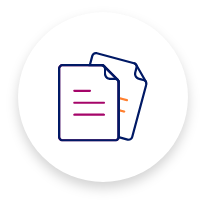
SITUATION
Identify a patient with T2D who may be struggling to adjust to self-management
Challenges
- Trying to build a habit of taking glucose readings
- Learning to use a blood glucose monitor
- Learning about A1C
- Having trouble reducing A1C
- Recurring hyperglycemia
Small steps that may help
- Keep track of glucose with continuous readings
- Observe daily glucose patterns to inform lifestyle changes

Possible
tech tools:
CGM with compatible app that offers tracking and education features2,4

SITUATION
In the process of changing eating habits
Challenge
- Understanding how certain foods affect glucose
Small steps that may help
- Logging food consumption
- Calculating carbs

Possible
tech tools:
Diabetes app with food-logging features7
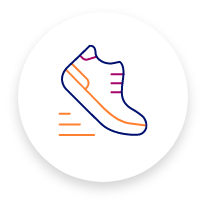
SITUATION
Adding physical activity to routine
Challenge
- Uncertainty about how much exercise they’re getting
Small steps that may help
- Keeping track of steps
- Monitoring heart rate and blood pressure

Possible
tech tools:
Fitness tracker or smartwatch8
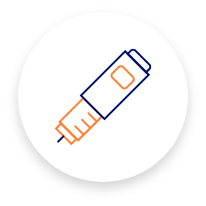
SITUATION
Prescribed basal insulin
Challenge
- Trying to build a routine of taking insulin at the same time each day
Small step that may help
- Create cue/reminder to take insulin

Possible
tech tools:
Diabetes app with dosing reminders7
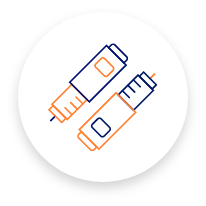
SITUATION
Prescribed basal and bolus insulin
Challenges
- Remembering to take insulin doses at mealtimes
- Logging insulin doses accurately
Small steps that may help
- Create cue/reminder to take insulin
- Automate dose logging
- Observe daily glucose and insulin patterns to inform lifestyle changes

Possible
tech tools:
Smart insulin pen with compatible diabetes app2,7,9
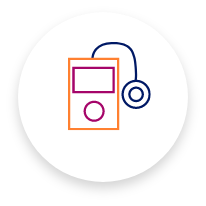
SITUATION
Prescribed basal and bolus insulin (using insulin pump)
Challenges
- Taking frequent glucose readings
- Adjusting insulin doses manually
Small steps that may help
- Create insulin dosing routine with fewer required steps
- Observe daily glucose and insulin patterns to inform lifestyle changes

Possible
tech tools:
Automated insulin delivery (AID) system2,10
Tech-up Follow-ups
- Identify 1 newly diagnosed patient and 1 established patient with T2D who may be struggling with their self-management routine.
- Prepare some information to share with them about a type of diabetes technology that you think might fit their needs. Include visual aids and insurance coverage options.
- At their next appointment, ask them how they might feel about trying this technology. Encourage them to talk through potential pros and cons.

Amy Hess-Fischl, MS, RDN, LDN, BC-ADM, CDCES
Chicago, Illinois
Amy is a diabetes care and education specialist and registered dietitian who sees type 1 and type 2 diabetes patients daily. She oversees their education recognition program and coordinates the Teen and Adolescent Diabetes Transition Program at University of Chicago’s Kovler Diabetes Center. She received the American Diabetes Association’s Outstanding Educator of the Year award in 2022.
Amy Hess-Fischl received a fee from Novo Nordisk for her participation.
References
- Johnston AR, Poll JB, Hays EM, Jones CW. Perceived impact of continuous glucose monitor use on quality of life and self-care for patients with type 2 diabetes. Diabet Epidemiol Manage. 2022;6(100068):1-6. doi:10.1016/j.deman.2022.100068
- Arbiter B, Look H, McComb L, Snider C. Why download data: the benefits and challenges of more diabetes data. Diabetes Spectr. 2019;32(3):221-225. doi:10.2337/ds18-0099
- Battelino T, Danne T, Bergenstal RM, et al. Clinical targets for continuous glucose monitoring data interpretation: recommendations from the international consensus on time in range. Diabetes Care. 2019;42(8):1593-1603. doi:10.2337/dci19-0028
- Association of Diabetes Care and Education Specialists, APhA. Personal Continuous Glucose Monitoring Implementation Playbook. 2020. Accessed July 2023. https://www.diabeteseducator.org/practice/practice-tools/app-resources/professional-cgm-playbook
- Patil SP, Albanese-O’Neill A, Yehl K, Seley JJ, Hughes AS. Professional competencies for diabetes technology use in the care setting. Sci Diabetes Self Manag Care. 2022;48(5):437-445. doi:10.1177/26350106221120889
- Greenwood DA, Howell F, Scher L, et al. A framework for optimizing technology-enabled diabetes and cardiometabolic care and education: the role of the diabetes care and education specialist. Diabetes Educ. 2020;46(4):315-322. doi:10.1177/0145721720935125
- Fu HNC, Wyman JF, Peden-McAlpine CJ, Draucker CB, Schleyer T, Adam TJ. App design features important for diabetes self-management as determined by the self-determination theory on motivation: content analysis of survey responses from adults requiring insulin therapy. JMIR Diabetes. 2023;8:e38592. doi:10.2196/38592
- Wagner A. Self-monitoring physical activity matters, according to smartwatch study. Penn State University. Last updated March 8, 2023. Accessed August 2023. https://www.psu.edu/news/health-and-human-development/story/self-monitoring-physical-activity-matters-according-smartwatch
- Sy SL, Munshi MM, Toschi E. Can smart pens help improve diabetes management? J Diabetes Sci Technol. 2022;16(3):628-634. doi:10.1177/1932296820965600
- Sherr JL, Heinemann L, Fleming GA, et al. Automated insulin delivery: benefits, challenges, and recommendations. A consensus report of the Joint Diabetes Technology Working Group of the European Association for the Study of Diabetes and the American Diabetes Association. Diabetes Care. 2022;45(12):3058-3074. doi:10.2337/dci22-0018
The Diabetes Tech-upTM Podcast
Join our expert cohosts for a series of discussions about how they’re integrating diabetes tech with patient-centered care to help optimize diabetes management.
The Mission of Diabetes Tech-upTM
Diabetes Tech-upTM is sponsored by Novo Nordisk, a global leader in diabetes. We believe that adoption of innovative technologies can help appropriate patients better manage diabetes. Our goal is to provide information to help health care professionals on the front line of diabetes care strengthen their understanding of diabetes technologies and implement them where they can have the greatest impact.
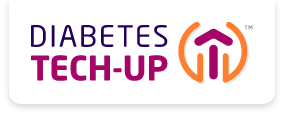

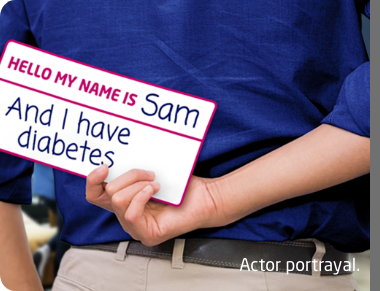

Share: